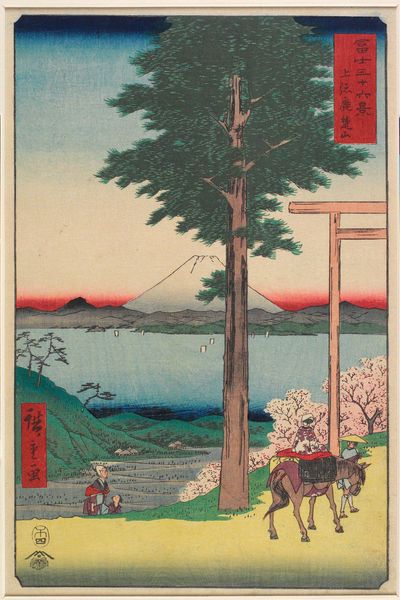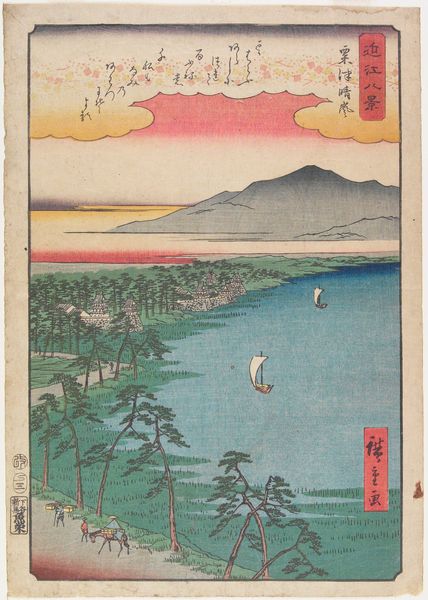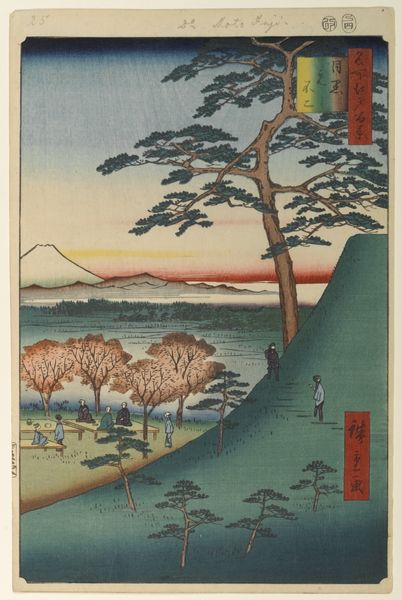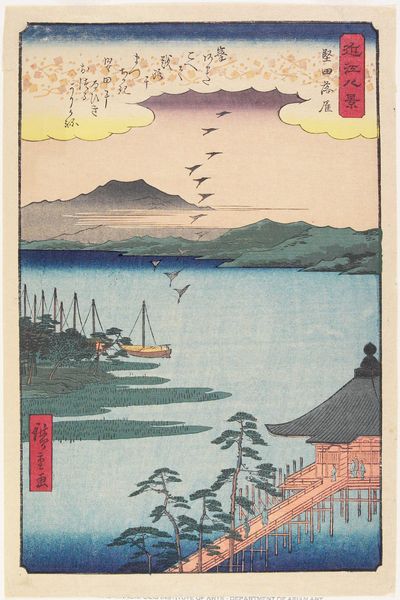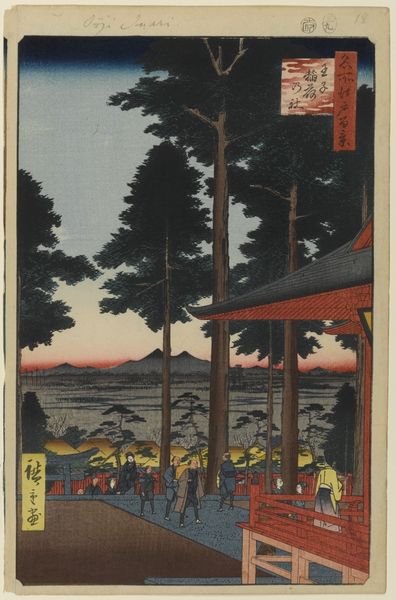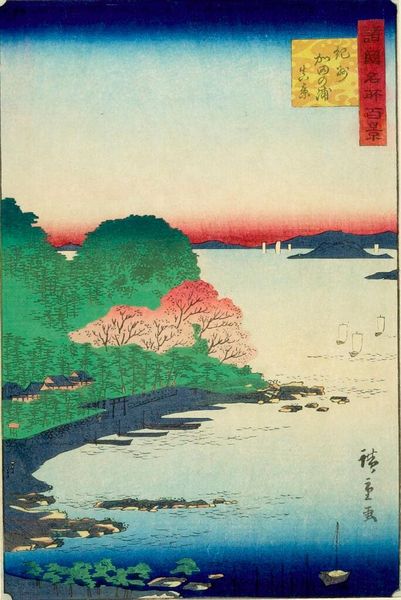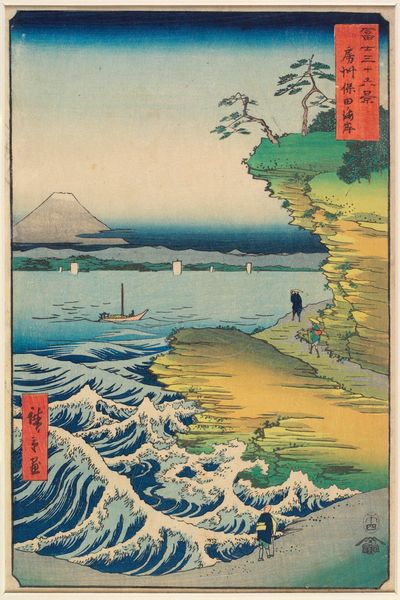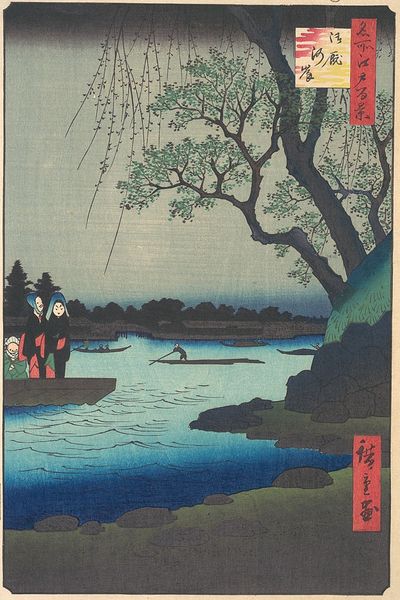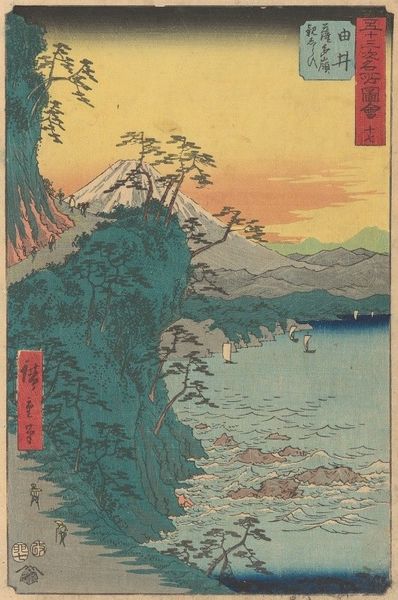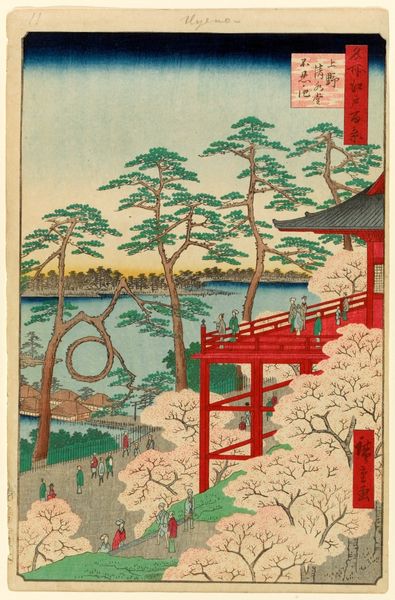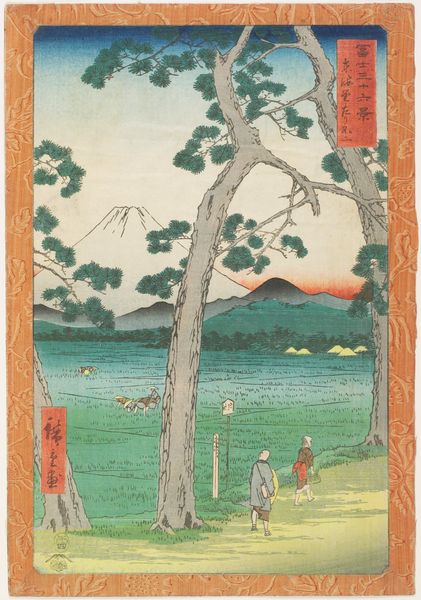
Fuji Seen from the Left on the Tōkaidō Possibly 1858
0:00
0:00
print, paper, ink, woodblock-print
#
water colours
# print
#
asian-art
#
landscape
#
ukiyo-e
#
paper
#
ink
#
coloured pencil
#
woodblock-print
Dimensions: 13 5/16 × 8 5/8 in. (33.8 × 21.9 cm) (image, vertical ōban)
Copyright: Public Domain
Editor: So, this woodblock print is titled "Fuji Seen from the Left on the Tōkaidō," possibly from 1858, by Utagawa Hiroshige. It feels so serene, the composition draws your eye from the foreground figures all the way back to Mount Fuji. What do you see in this piece from your perspective? Curator: Well, immediately I’m struck by how this image participates in the *meisho-e* tradition of Japanese printmaking - literally "pictures of famous places." How does this print function as a commodity of cultural tourism during the late Edo period? This scene, likely produced for consumption by urban dwellers, encapsulates a longing for idealized nature, a curated escape from the socio-political realities of urban life. Notice how the carefully placed figures and even the grazing horses guide our view; what do you think of that arrangement? Editor: I guess that makes sense, almost like advertising. I never really thought of landscapes as having a "political" side. The figures give the scene life, but the mountain feels very distant, almost unattainable. Curator: Exactly. This remoteness speaks volumes about the accessibility, or inaccessibility, of this ideal. Hiroshige, knowingly or unknowingly, captured a society’s relationship with its own myths. Consider how prints like this were disseminated – mass-produced and distributed, shaping perceptions of Japan both domestically and internationally, particularly influencing the rise of Japonisme in the West. How does knowing it was mass produced affect your interpretation? Editor: It definitely shifts my thinking! It’s no longer just a beautiful landscape but also a constructed image, part of a much bigger system. Curator: Precisely. It demonstrates how artistic expression often intertwines with broader social and economic systems, even in what appears to be a simple landscape. I wonder what role tourism played. Editor: I’ll definitely look at art, especially landscapes, with a more critical eye now, considering their place in society. Curator: Likewise, it's enlightening to see how artistic representation intersects with the socio-political forces of the time.
Comments
No comments
Be the first to comment and join the conversation on the ultimate creative platform.
